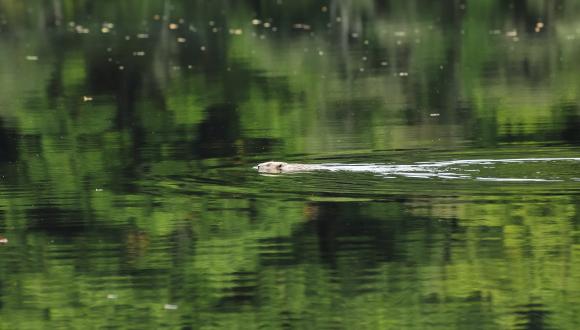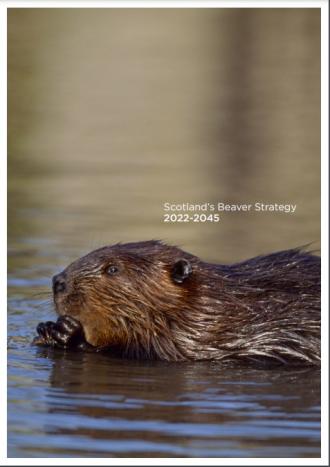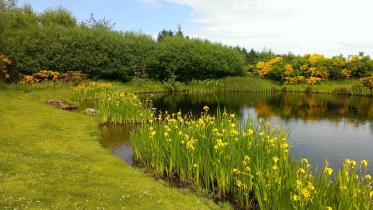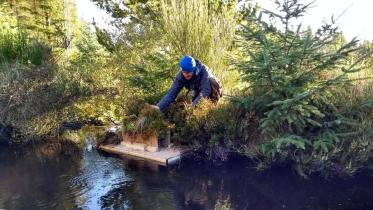Management Framework - Conservation status of Beavers in Scotland
Aim of document
This paper considers how NatureScot will assess the conservation status of beavers in Scotland. This is important in order to ensure that we can meet our legal requirements and ensure that any management actions or other influences will not compromise the overall aim of enabling the natural expansion of beavers in Scotland from the existing populations in Tayside and Argyll.
Background
The first confirmed records of beavers in the Tay Catchment Beavers were from 2006. The Scottish Beaver Trial at Knapdale commenced in 2009 with a small number of animals released. The population in Tayside was surveyed in 2012 which estimated that there were around 39 family groups in the Tay Catchment. A further survey was carried out in 2018 which recorded an increase to approximately 114 family groups and a significant increase in range within and with animals now being found outside of the catchment. The population in Argyll is currently being supplemented to facilitate its expansion.
Prior to full protection being afforded to beavers as European Protected Species unregulated culling of beavers has been undertaken in many areas. The extent of this culling is not known but is thought to be largely confined to the Tayside population.
In 2019 beavers were formally given European Protected Species status under the Conservation (Natural Habitats &c) Regulations 1994. As such they receive special protection meaning that, in general terms, any actions affecting them can only be carried out under licence. This also places a requirement on NatureScot to monitor populations and to ensure that any licensed actions will not be detrimental to the maintenance or restoration of favourable conservation status of beaver populations.
What is favourable conservation status?
The Directive defines the conservation status of a species as ‘the sum of influences acting on the species concerned that may affect the long-term distribution and abundance of its populations… ’, this applies, for the UK and Scotland, to the Atlantic biogeographic region.
The conservation status is favourable when:
- population dynamics data on the species concerned indicate that it is maintaining itself on a long-term basis as a viable component of its natural habitats, and
- the natural range of the species is neither being reduced nor is likely to be reduced for the foreseeable future, and
- there is, and will probably continue to be, sufficiently large habitat to maintain its populations on a long-term basis.
For most other species of EPS there are reference values against which any assessment of conservation status is made. These are often based upon the data available when the Directive came into force in Scotland in 1994 but because beavers were not present at that time then no such value exists. Therefore we need to consider a more pragmatic approach to assessing and monitoring conservation status in Scotland.
The conservation status of beavers in Scotland
The three ‘components’ for consideration of conservation status are considered below against the information currently available for beavers in Scotland;
- Population dynamics: In Tayside the survey data indicates that the population size, density and distribution increased substantially between the 2012 and 2018 surveys. In Knapdale the population has not increased (although this was not the aim of the Scottish Beaver trial). Current and on-going translocation work will continue with the aim of supplementing the existing population there.
- Range: The recent surveys have shown that the Tayside population has continued to expand in range and has spread beyond the wider Tay catchment. In Knapdale the range of the population has not changed significantly.
- Availability of suitable habitat: Available habitat for beaver from Beavers in Scotland indicates sufficient habitat availability both now and in the foreseeable future.
In summary, we have recent, good quality survey information which concludes that the Tayside area population is increasing and its range expanding here. The small, remnant trial population at Knapdale also contributes to the number and range of animals living wild in Scotland. Given the above, we consider it appropriate to conclude that the conservation status of beavers in Scotland is improving.
Ensuring favourable conservation status in the long-term
We have to ensure that the conservation status of beavers in Scotland continues to improve. We consider that the future prospects for beavers are good. We consider that there will continue to be sufficient suitable habitat for now and the future and that the population will continue to grow in number and range.
Once protection is afforded lethal control will be permitted as a management tool under licence. This will particularly be the case in areas where beaver activity is causing serious damage to other public interests such as on areas of our most productive and low-lying farmland (and where we know that lethal control has been on-going for many years prior to protection being afforded). We can therefore anticipate and accept that in such high-conflict areas beaver populations may be at a lower density than elsewhere and that they may in some local areas be possibly absent. However, the licensing regime will now allow for the level and extent of control to be fully understood.
By continuing to monitor beaver populations in line with our Survey, Research and Monitoring strategy we can ensure that beavers have a favourable conservation status. Key to this will be satisfying ourselves that the Scottish beaver population continues to increase in both range and number. This will continue to be reviewed and, should there be any indication that this trend is not continuing, we will adapt our approach and Management Framework accordingly.
Published: 2019
Contact
If you already have a licence number, include it in the subject line of your email, or have it to hand when you call.







